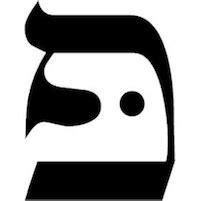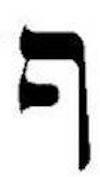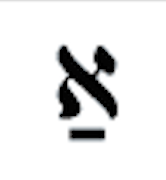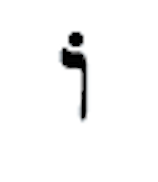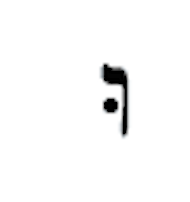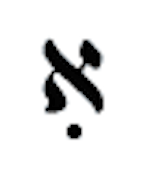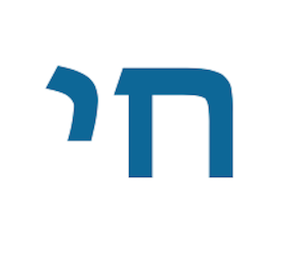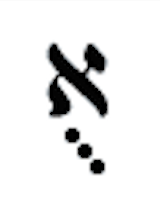Hebrew Lesson 17 - Fey/Pey

Questions relate to the Fey and Pay.
- 1.
Which statement is NOT correct about the Pey?
- A.
Remove the dagesh and the letter becomes the Fey.
- B.
This letter makes the P sound as in puppy.
- C.
This letter makes the F sound as in flower.
Correct Answer
C. This letter makes the F sound as in flower.Explanation
The Pey is a Hebrew letter that represents the "P" sound, not the "F" sound as in flower. When the dagesh, a dot placed within the letter, is removed, the Pey becomes the Fey, which represents the "F" sound. Therefore, the statement "This letter makes the F sound as in flower" is not correct.Rate this question:
-
- 2.
This is the final Fey found at the end of a word.
- A.
True
- B.
False
Correct Answer
A. TrueExplanation
The final Fey found at the end of a word is a true statement. This suggests that the word ends with the Fey sound in the Fey language. It implies that the pronunciation or spelling of the word is influenced by the presence of this final Fey sound.Rate this question:
-
- 3.
Which statement is NOT true?
- A.
This letter has no sound.
- B.
This letter is similar to the Alef.
- C.
This letter has the AH sound.
Correct Answer
C. This letter has the AH sound.Explanation
The given statement "This letter has the AH sound" is not true because the previous statements mention that the letter has no sound and is similar to the Alef. Therefore, it contradicts the information provided.Rate this question:
-
- 4.
What sound does this make?
- A.
AH
- B.
OH
- C.
OO
- D.
EE
Correct Answer
A. AH -
- 5.
What sound does this letter make?
- A.
OO
- B.
OH
- C.
V as in victory.
- D.
EE
Correct Answer
B. OHExplanation
The letter "OH" in this context is representing the sound that is commonly associated with the exclamation of surprise or realization. It is a vocalization that is often used to express astonishment or understanding.Rate this question:
-
- 6.
What sound does this letter make?
- A.
EH
- B.
OO
- C.
EE
- D.
AH
Correct Answer
B. OOExplanation
The correct answer is "OO" because the letter combination "OO" typically makes the long vowel sound /uː/ as in words like "moon" or "room".Rate this question:
-
- 7.
What sound does this letter make?
- A.
AH
- B.
EE
- C.
EH
- D.
AV
Correct Answer
B. EEExplanation
The correct answer is "EE" because the question is asking for the sound that the letter makes, and the letter "EE" represents the long vowel sound /iː/.Rate this question:
-
- 8.
Which statement is NOT correct?
- A.
This letter is the final Mem
- B.
This letter is found at the end of a word.
- C.
This letter is the Samekh
Correct Answer
C. This letter is the SamekhExplanation
The statement "This letter is the Samekh" is not correct because the letter mentioned in the previous statements is not the Samekh. The previous statements describe the letter as "the final Mem" and "found at the end of a word," which indicates that the letter being referred to is not the Samekh.Rate this question:
-
- 9.
This is the Hebrew word for live.
- A.
True
- B.
False
Correct Answer
A. TrueExplanation
The Hebrew word for live is indeed true.Rate this question:
-
- 10.
What sound does this make?
- A.
AH
- B.
OO
- C.
OH
- D.
EE
Correct Answer
B. OOExplanation
The given options represent different vowel sounds. The sound "OO" is commonly associated with the long "u" sound, as in "moon" or "food".Rate this question:
-
Quiz Review Timeline +
Our quizzes are rigorously reviewed, monitored and continuously updated by our expert board to maintain accuracy, relevance, and timeliness.
-
Current Version
-
Mar 22, 2023Quiz Edited by
ProProfs Editorial Team -
Dec 22, 2019Quiz Created by
Jimbecka
 Back to top
Back to top



